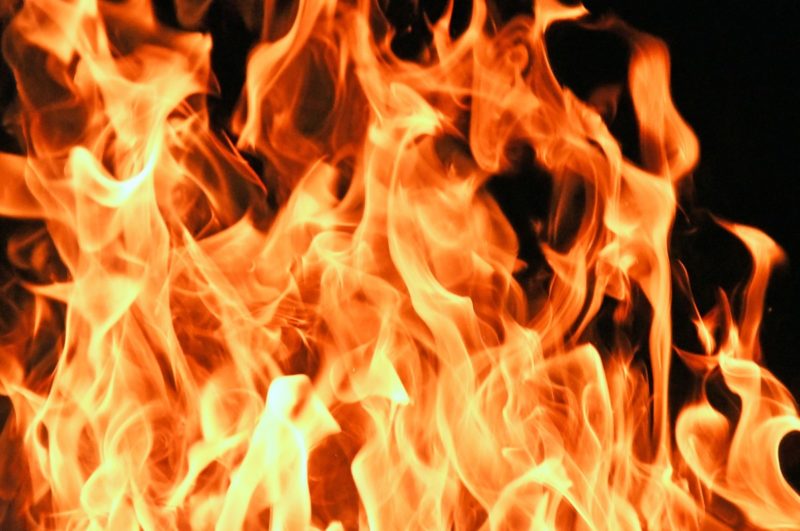The flames emitted by your stove can tell if there is a potential hazard, so you may want to know why is the flame on my gas stove orange. If you see orange flames and not blue, then it may indicate that your burners need to be adjusted or cleaned.
Furthermore, the orange flame may also signal that the gas stove is experiencing improper combustion. In such a case, IT may emit unsafe carbon monoxide levels. Just keep on reading to find out more about this particular topic. We will likewise provide you with the common causes that resulted in the color changes of flame from your burner.

What Causes The Flames To Change Colors?
Why is the flame on my gas stove orange? It typically has an orange hue when you gaze at a wood fire. The same cannot be true for a controlled fire gas stove. This should be a blue one. Usually, the fire is orange in color because of the sodium in the wood. The sodium emits a bright orange color when you start the fire.
Blue wood is a tiny proportion because of its carbon and its hydrogen, which produce violet and blue colors when burnt. It is most likely that you will see an orange light on your gas stove.
One explanation for this could be that your burner emits dangerous carbon monoxide gas levels and must be repaired. However, a better understanding of the combustion principles, which are the primary cause of the fire, is necessary to understand this issue fully.
The orange ones aren’t the issue. If the mixture is imbalanced, colder pockets are available. This is simply because the fuel is not used efficiently, and you remain in your gas stove with orange flames. Unbalance is the cause of the orange flame, as we have seen. You should be aware, however, that there may be several causes that resulted in this.
For example, you may not clean the opening on your gas burner correctly. Due to their significant soot accumulation, they are likely to get clogged over time. As a consequence, the gas supply of the burner is uneven. The hue you see when a fire creates soot is orange, often known as incandescence.
Another issue is that the incorrect opening. They are made differently depending on the kind of gas utilized. Keep in mind that liquid propane and natural gas (methane) air-fuel needs vary significantly. The air shutter is also possible to be inefficient or even dangerous. As a consequence, the mix of oxygen and fuel would be wrong.
Why Is The Flame On My Gas Stove Orang? Principles Of Combustion
A gas stove must provide the necessary fuel and the correct oxygen balance, leading to carbon dioxide or CO2 to complete combustion. However, when fuel oxygen combustion is uneven, it will be incomplete, and carbon monoxide is generated as a by-product (CO).
The color of the flame is related to the intensity of the produced heat; hotter flames resulting from correct oxygen/fuel ratios are blue. Conversely, cooler bags develop in the fire when fuel oxygen is imbalanced because the fuel is not properly burnt. The outcome is orange flames.
Orange Flames
A fuel-oxygen mixture imbalance may develop for some reason. For example, a soot deposit may clog the holes in a gas burner, leading to a fuel flow to the burner that is not constant. The resultant incandescence is orange when the flame burns the dust. Furthermore, you may have placed the incorrect hole for the kind of gas you use; fluid propane and natural gas are subject to differing air-to-fuel needs.
The air shutter may be too tiny or broken which is why the necessary oxygen may be mixed with the fuel. With insufficient oxygen supply, just one part of the gas can light up in a brighter blue light, and the rest in a cooler orange flame.
Red Flags
Combustion generates a by-product of carbon monoxide gas. Blue flaming gas burners typically produce CO levels that are acceptable for daily cooking. On the other side, orange flames provide a warning if high CO levels occur. Co-intoxication is the source of flu-like symptoms such as headache, dizziness, and nausea.
CO is the silent murderer in severe instances because its colorless and odorless presence may give unsuspecting victims a fatal dosage. You should never use a gas burner for house heating if it is not discharged. Even a blue fire can produce CO, which may increase hazardous quantities if the ventilation is insufficient.
What To Do About This?
The answer to the issue starts with the identification of a red-orange fire gas burner indicator. Then, you may need a technician to clean the gas burner, an air shutter adjustment, or an incorrect flamer replacement. Fixing a combination of unbalanced fuel and oxygen is not easy. Monitors are an essential element of home safety since they alert you about dangerously high CO levels.
It’s A Wrap!
To sum up the answers as to why is the flame on my gas stove orange, well, if the supply of oxygen is not enough, some parts of the gas burner provide a stronger blue light, while others do not, which resulted in orange flames. For more informational articles, you might be interested to learn how to choose a wine fridge.
